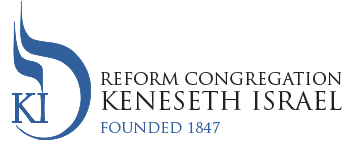Parashat Va-Eira: Four Divine Promises of Redemption And The First Six Plagues. Holocaust Remembrance Shabbat.
The Torah portion of Va-eira “And I Appeared (to Avraham)” is the first of four Sidrot/portions depicting G-d’s most active and aggressive intervention in the lives of the Jewish people, encompassing the Ten Plagues, the Exodus from Egypt, the Splitting of the Sea of Reeds, the march to Mount Sinai, and the ultimate divine act of Matan Torah, giving the Ten Commandments to the Jewish people! G-d Almighty clearly and without ambiguity specifies His goals: “I am the Eternal. I will free you (V’hotzeti) from your labors of the Egyptians and deliver (V’hitzalti) you from bondage. I will redeem (V’ga-alti) you with an outstretched arm and through extraordinary chastisements. And I will take (V’lakahti) you to be My people, and I will be your G-d.” (6:6-7) This verse tells Moses and the Israelites exactly what G-d is planning. These four action verbs are the source for the four cups of wine that we drink at our Pesach Sedarim. After these clearly stated divine promises, G-d brings them to ultimate fruition in Va-eira and in the following three Torah portions.
G-d commands Moses to go before Pharaoh and demand that he let the Israelites go to worship the Almighty. Despite his protestations that his speech impediment makes him unable to serve as G-d’s emissary, the Almighty insists that Moses go before Pharaoh together with his older brother, Aaron, as his spokesman.
Now begins the demonstrations of G-d’s power to Pharaoh and his court. Moses and Aaron invoke the procession of the calamities to come! After a series of early tricks that are partially replicated by Pharaoh’s magicians, Moses and Aaron announce in earnest the terrifying Ten Plagues!
The Ten Plagues can be analyzed in several different ways. The editors of the Biblical text have grouped the plagues to teach us one primary lesson: “And the Egyptians shall know that I am Eternal when I stretch out My hand over Egypt and bring out the Israelites from their midst.” (7:5)
There are three audiences to which the plagues must teach the lesson of G-d’s power: to Pharaoh and his Egyptian magicians; the Egyptian population; and to the Israelites.
I learned from the Encyclopedia Judaica that the plagues can be best understood by viewing them in three groups of three plagues each, plus the final catastrophe of the death of the first born. In each group, there is a growing hierarchy of terror. There is symmetry in each group of three plagues. In plagues one, four, and seven, G-d commands Moses to stand before Pharaoh in the morning at the Nile River and warn him and the assembled community. In plagues two, five, eight, G-d commands Moses and Aaron to enter into Pharaoh’s palace to warn him there. Plagues three, six, and nine begin with no warning at all! The plagues are followed, first by Pharaoh’s agreement to release the Israelites, and then by the “hardening of his heart” retraction!
The last plague, the slaying of the first born, is induced by G-d alone! Do you remember the green smoke slowly invading the homes of the Egyptians in the Cecil B. DeMille Ten Commandments movie?
In next week’s Sidrah, we shall read in detail the Torah account of plagues seven through ten. The unified literary construction of these four Torah portions is completed with the ultimate divine revelation of the Ten Commandments in the portion of Yitro: ten horrific plagues followed by the ultimate revelation of the Ten Commandments! Stay tuned!
Eight decades ago, the Jews of Europe experienced the ultimate plague: the wanton and purposeful attempt to destroy the Jewish people by Adolph Hitler, may his memory be erased, and the Nazi empire. They succeeded in murdering six million Jewish men, women, and children by systematic killing, shootings, and ultimately mass gassing of helpless European Jews. Frequently I think of the loss of cultural creativity and scientific breakthroughs that disappeared with the destruction of these six million Jewish souls!
Cantor Levy has planned a special Shabbat service on Friday evening, January 27, the International Shabbat of Holocaust Remembrance. The service will feature music of this horrible epoch.
Our amazing Adult Choir, Shir KI, will sing The Song of Faith, Ani Maamin. They will sing the Partisan Hymn, sung by Jews who escaped from the death camps and waged guerrilla warfare on Nazi soldiers in the forests. They will sing Es Brent, Our Town is Burning, a classic of the Holocaust era. Our newest choir, Zachor, conducted by Alyssa Davidson Arms, will sing selections from “I Never Saw Another Butterfly,” music composed by her beloved father, Cantor Charles Davidson, Cantor emeritus of Congregation Adath Jeshurun, to poems discovered in the Theresienstadt concentration camp.
The featured work will be selections from Brundibar, a children’s opera written by Jewish Czech composer Hans Krasa with a libretto by Adolf Hoffmeister. This opera was made famous by performances of the children of Theresienstadt concentration camp in occupied Czechoslovakia. The name comes from a Czech colloquialism for a bumblebee. The lead character, Brundibar, is an obnoxious organ grinder who torments the town’s children. This memorable piece was performed many times by children prisoners. Many were transported to Auschwitz following their performances. New companies of children learned the work so that the opera could be repeated again and again. The Nazis filmed the opera to demonstrate falsely that all was well within the Theresienstadt camp. Selections from the opera will be sung by our professional quartet. The children’s choir will join Shir KI for the final chorus of Brundibar.
Please join us on Friday, January 27, at 7:00 p.m. for a moving service in commemoration of International Holocaust Day of Remembrance.
Shabbat Shalom U’m’vorach!
